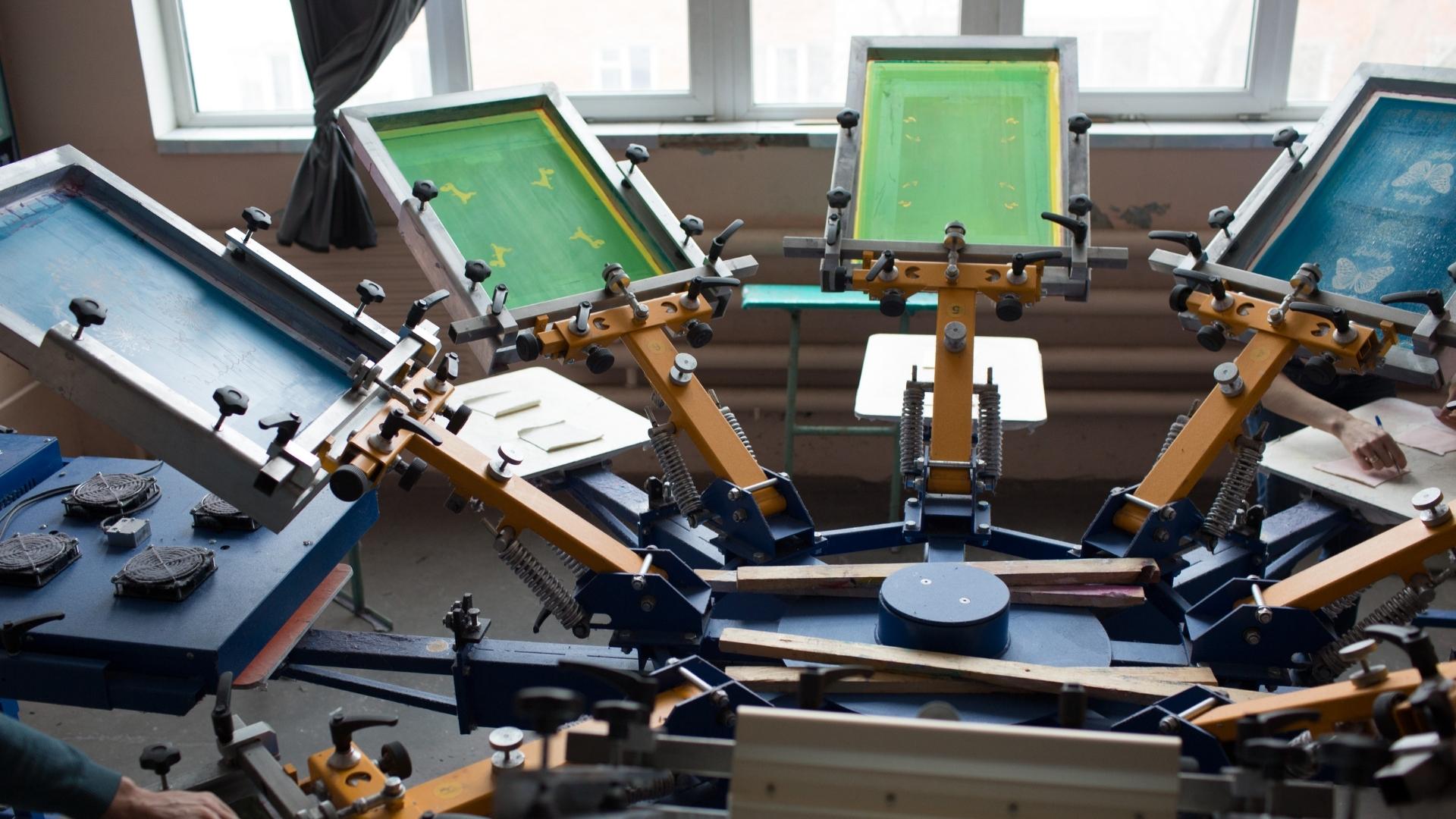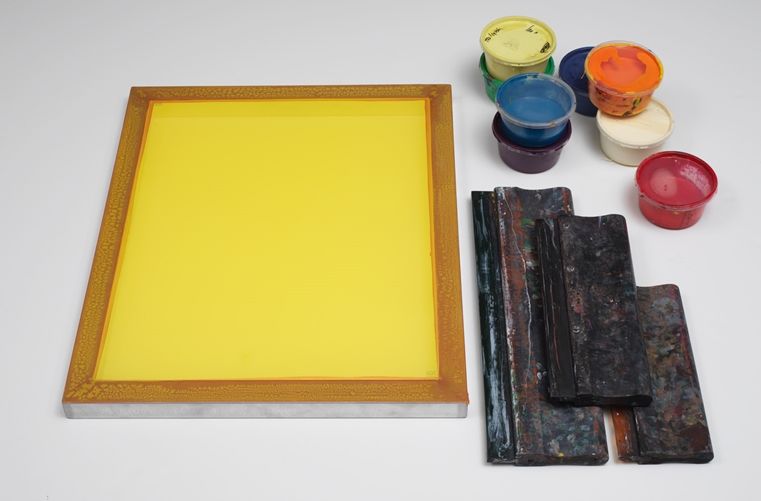ChatGPT said: The complete guide to 10:9 Design Screen Printing Texas
Wiki Article
The Vital Overview to Understanding Screen Printing and Its Versatile Utilizes
Screen printing has an abundant history that dates back to old times, progressing right into an innovative technique made use of across numerous industries today. This guide explores the ins and outs of the screen printing procedure, outlining its applications in advertising, style, and home style - 10:9 Design reviews. Understanding these principles can open up innovative possibility for both creative and business jobs. The following sections will certainly expose crucial pointers and methods to boost one's screen printing undertakingsThe Background of Screen Printing
Screen printing has origins that trace back centuries, its development reflects the technical and artistic advancements of different cultures. Originating in old China, the technique was at first made use of for decorating textiles and later spread to Japan, where it became essential to Ukiyo-e woodblock printing. The method changed to Europe in the 18th century, where it obtained popularity among artisans and commercial printers. The creation of image solution in the 20th century changed screen printing, enabling for more elaborate layouts and better performance. Musicians like Andy Warhol further moved its appeal, making use of the tool to develop famous jobs that combined commercialism and art. By the late 20th century, screen printing had established itself as a flexible strategy, utilized in vogue, advertising and marketing, and art. Today, it remains to advance, integrating electronic modern technology and broadening its applications across numerous markets.The Screen Printing Refine Explained
Screen printing transforms artistic visions into concrete styles through a series of exact steps. At first, an image is produced and after that transferred onto a screen, generally made from great mesh textile stretched over a frame. A light-sensitive emulsion is used to the screen, which is subjected to light, setting in locations not covered by the picture. After washing out the unhardened emulsion, a pattern is developed.Next off, the screen is put over the substrate, whether it be material, paper, or an additional product. Ink is after that pushed via the open locations of the pattern using a squeegee, depositing the style onto the substrate listed below. This process can be repeated for numerous shades, calling for different screens for each color. The published thing is healed making use of warmth to ensure the ink adheres appropriately, resulting in a durable, lively style ready for usage.
Types of Screen Printing Techniques

Furthermore, specialty methods, such as discharge screen printing, get rid of dye from the material to create softer prints, while foil screen printing applies metal aluminum foil to accomplish a shiny coating (10:9 Design Embroidery). Each strategy offers distinct attributes, dealing with different imaginative demands and production ranges, inevitably broadening the opportunities within the screen printing domain name
Applications of Screen Printing in Different Industries

Additionally, the signage and advertising and marketing fields make use of screen printing for developing appealing display screens and banners. This technique allows for vibrant colors and detailed layouts that catch focus. read more In electronic devices, screen printing is used for applying conductive inks to circuit boards, essential for part links. Furthermore, the home design industry welcomes screen printing to create unique designs on fabrics and wall art. Generally, screen printing serves as an important device across varied areas, improving items with customized and aesthetically attractive graphics.
Tips for Successful Screen Printing Projects
While carrying out a screen printing task, cautious interest to detail can substantially enhance the final end result. Picking top quality products is essential; this consists of the screen, inks, and substratums. Using proper mesh matters can impact ink deposition and information resolution. Prep work is just as important; comprehensive cleaning of displays and appropriate exposure times guarantee crisp prints.Next off, accurate registration is vital for multi-color prints. Utilizing alignment devices can help accomplish exact layering. Additionally, testing prints on scrap products before production aids determine prospective issues without squandering resources.

Regularly Asked Inquiries
What Materials Are Ideal for Screen Printing on Material?
Cotton and polyester blends are excellent for screen printing on fabric as a result of their resilience and ink absorption. In addition, specialized materials like silk or canvas can generate distinct textures and finishes, enhancing the total design quality.Exactly how Do I Tidy and Maintain Screen Printing Equipment?
To preserve and clean screen printing devices, one must routinely clean displays with appropriate solvents, examine mops for wear, lube relocating components, and store all items in a completely dry, dust-free environment to lengthen their lifespan.What Are the Environmental Influences of Screen Printing?
Screen printing can have significant ecological impacts, consisting of chemical waste from solvents and inks, water usage during cleansing procedures, and power consumption. Lasting methods and environment-friendly products are necessary for lessening these unfavorable effects.Can Screen Printing Be Done in your home Properly?
Screen printing can be effectively done at home with the best products and methods. Enthusiasts can produce top quality prints, though success depends on their ability level, equipment, and understanding of the procedure included.
What Are the Expenses Related To Beginning a Screen Printing Service?

Beginning a screen printing organization includes costs for devices, materials, and office. Initial expenses usually vary from a couple of hundred to a number of thousand dollars, depending upon the range, top quality of equipment, and wanted production capability.
Screen printing has a rich background that dates back to old times, progressing into a sophisticated method utilized across different industries today. Another method, rotating screen printing, employs cylindrical screens, helping with constant printing on fabric rolls, consequently improving performance for massive manufacturings. Furthermore, specialty techniques, such as discharge screen printing, eliminate dye from the fabric to create softer prints, while foil screen printing uses metallic foil to achieve a glossy surface. In the style market, screen printing is widely utilized to create lively designs on garments, making it possible for brands to display their one-of-a-kind styles. Cotton and polyester blends are optimal for screen printing on textile due to their toughness and ink absorption.
Report this wiki page